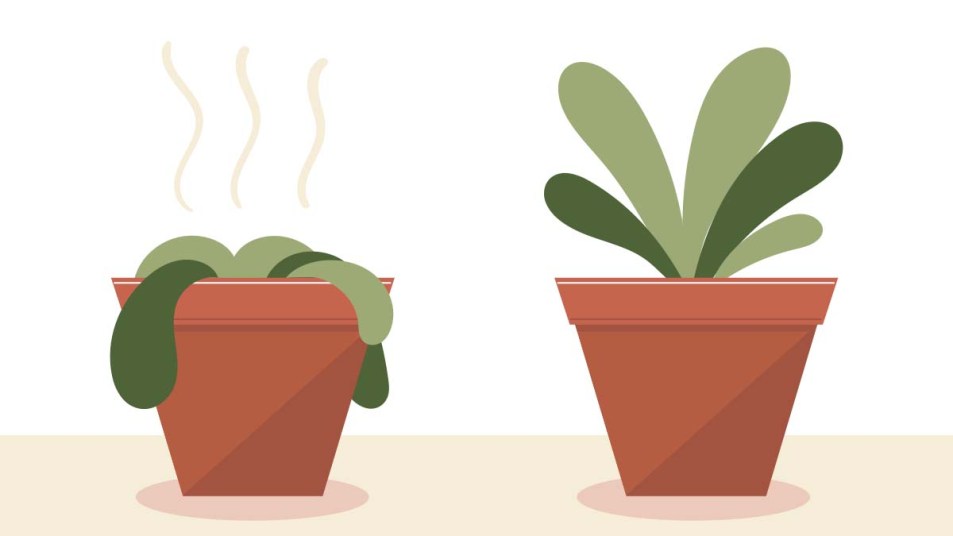Drooping Is a Sign Your Houseplants Need More Attention — Here’s How To Fix It
A quick lesson in plantcare 101.

From watering consistently to providing adequate sunlight, tending to your plants takes work. The payoff, of course, is greenery whose healthy, vibrant appearance brightens your home and lifts your mood. Slacking on your plant parent duties, however, can have the opposite effect, yielding leaves that look limp and wilted. But even with tons of TLC, some plants have trouble shining bright. Below are simple ways to identify the root (pun intended) cause of your plants’ drooping leaves, and instructions for nursing them back to health.
Houseplant SOS: Why Your Plants Are Drooping
Plants like snake plants and fiddle leaf figs require the right balance of watering, sunlight, and temperature control to thrive. When these are out of balance, the plant’s turgor is reduced. (Turgor is the water pressure in the plants’ cells that keeps the leaves upright, firm, and strong.) Luckily, insufficient turgor is fixable!
Here’s a list of drooping plant causes from PatchPlants.com, plus methods for reviving your plants:
- Underwatering: Excessively dry leaves are a clear sign that’s not receiving enough water. The fix: Touch the soil, and if it’s super dry increase the frequency that you water the plant. Be sure to only water it when the upper 2 inches of soil feel dry.
- Overwatering: Leaves with a yellow and wilted appearance are overwatered. The fix: Check the soil, and allow the plant to dry if it’s really wet. In the future, stick to watering the plant when the top 2 inches of soil are parched.
- Lack of sunlight: If a plant hasn’t received enough sunlight to sustain itself, it will droop. The fix: Inch the plant close to a brighter area, while avoiding drastic changes such as going from deep shade to a sunny window, which can stress your plant out.
- Temperature: An overheated plant will dry out rapidly, whereas a plant that’s too cold will wilt due to stress. The fix: Ensure that your plants are in a warm, temperature-stable room. If the room’s temperature feels comfortable to you, then it’s suitable for the plant.
- A pot that’s too small: A plant that’s outgrown its pot is unable to fully absorb nutrients, which results in weakened leaves. The fix: Repot the plant between March and September, as these are the months that comprise your plant’s growing phase.
- Aging: Surprisingly, limp leaves can simply be a sign that its life cycle is finished. The fix: Gently snip off the wilted leaf, which will encourage new growth in your plant.
How long will it take?
The time it takes for your plant to perk back up depends on the issue. A wilted plant could fully recover from drooping within a few days if it just needed some water. However, overwatered plants may need a few weeks to recuperate. This most important thing is regularly caring for and inspecting your plants. This way you’ll know exactly when something’s off with them, and can correct the issue right away. Just remember: a patient and attentive plant parent is a successful plant parent.
Final Thoughts
Taking care of your plants allows them to take care of you — literally. Along with their mood-boosting benefits, indoor plants can improve your home’s air quality. This may aid in keeping allergies, poor sleep, and headaches at bay. Ultimately, your plants deserve the best care so they can continue beautifying and invigorating you and your home.
















